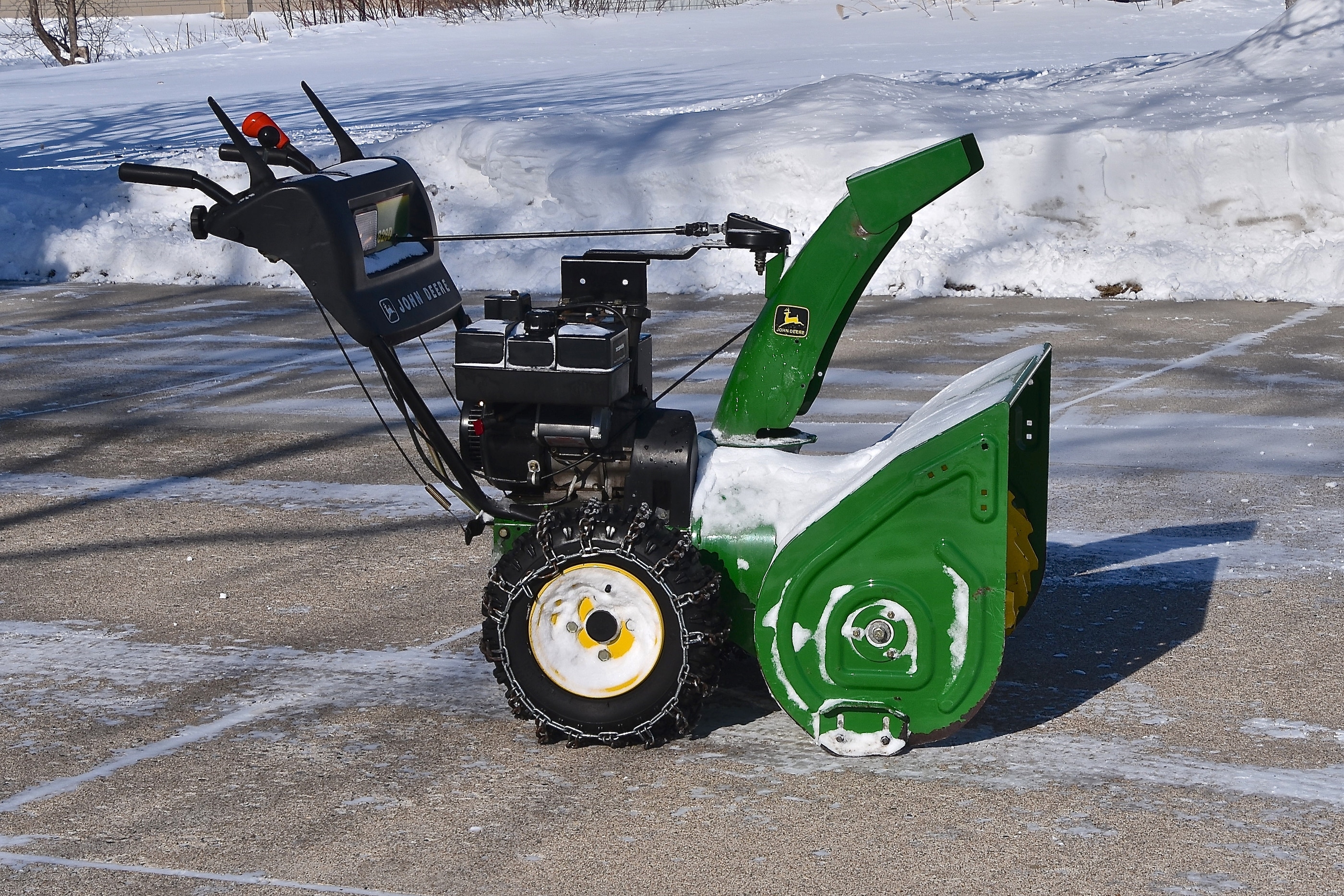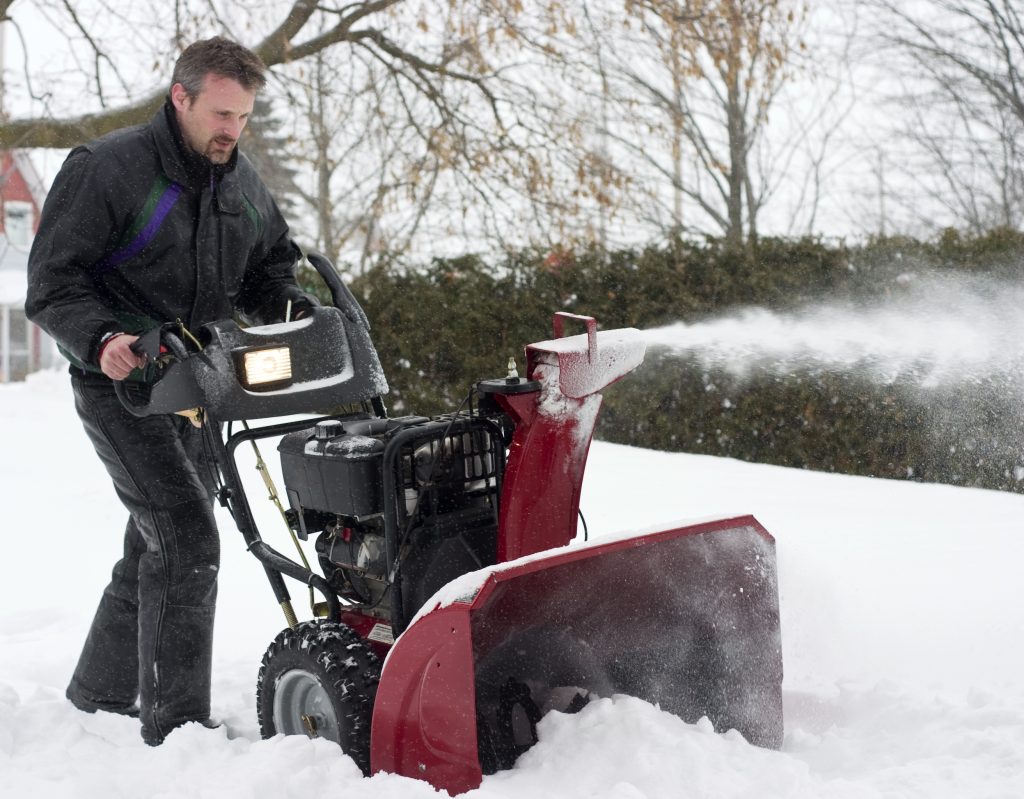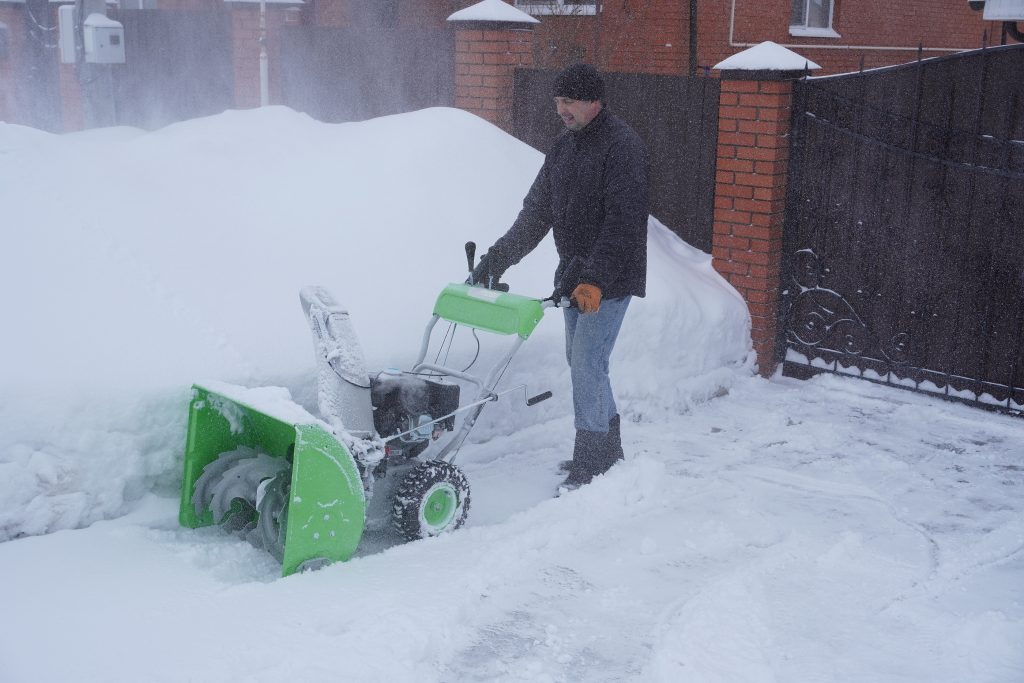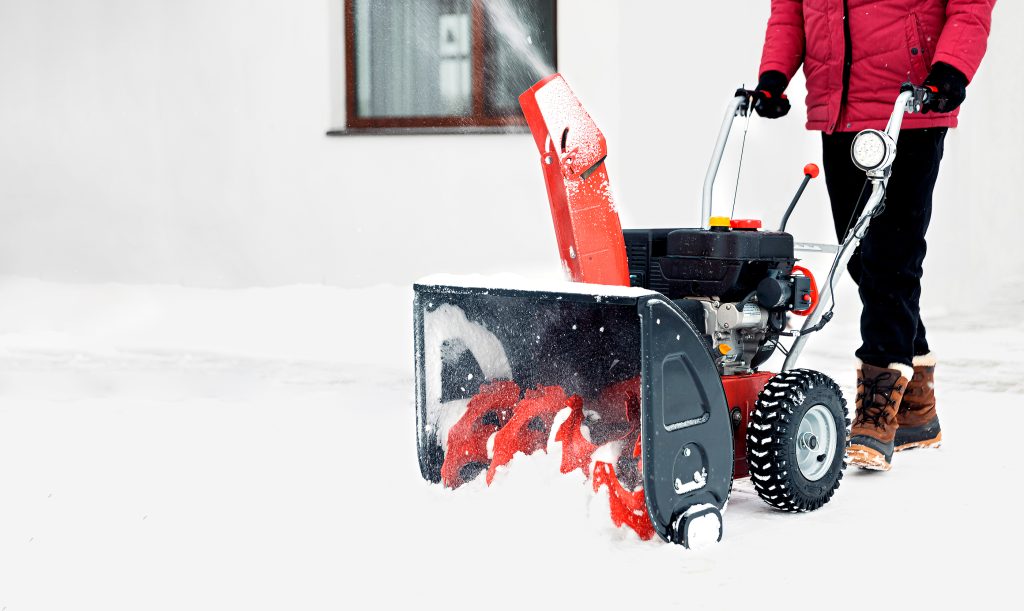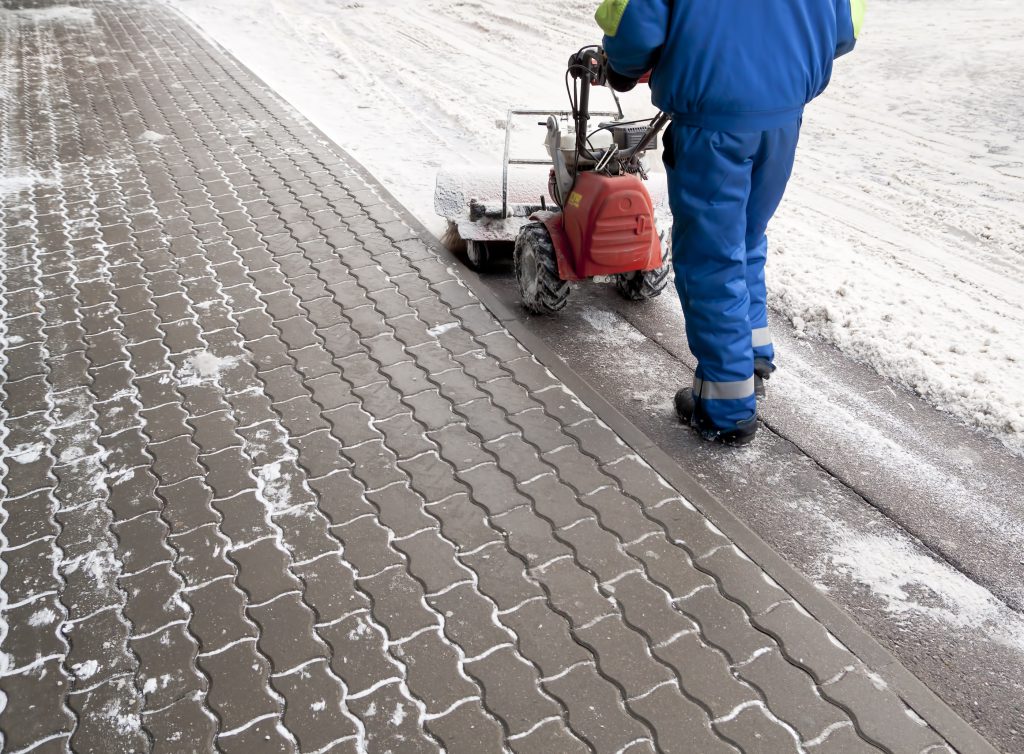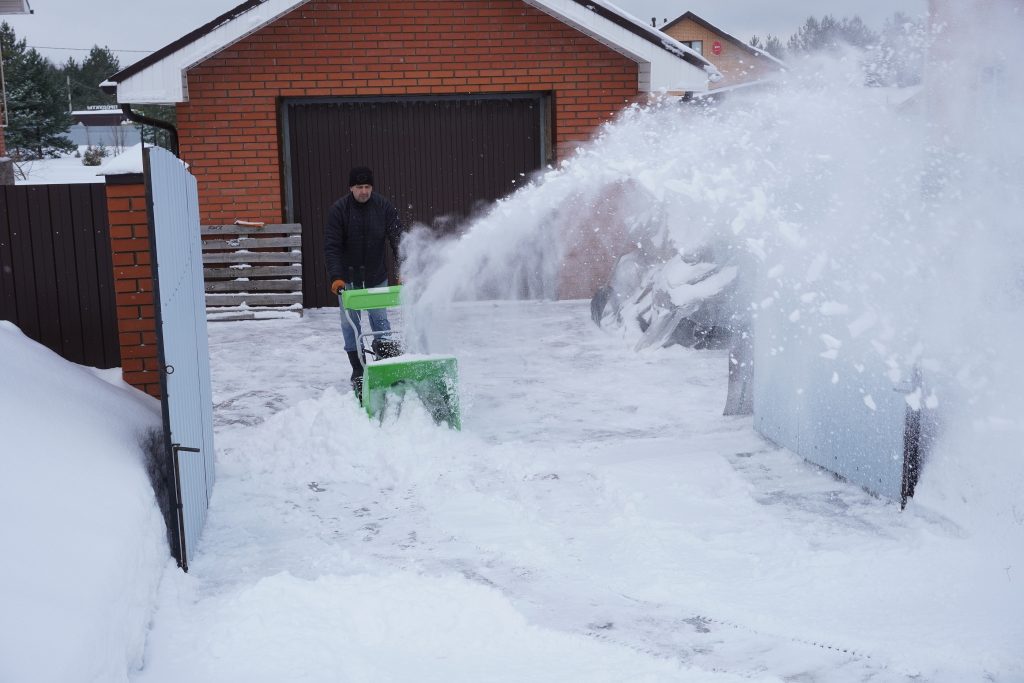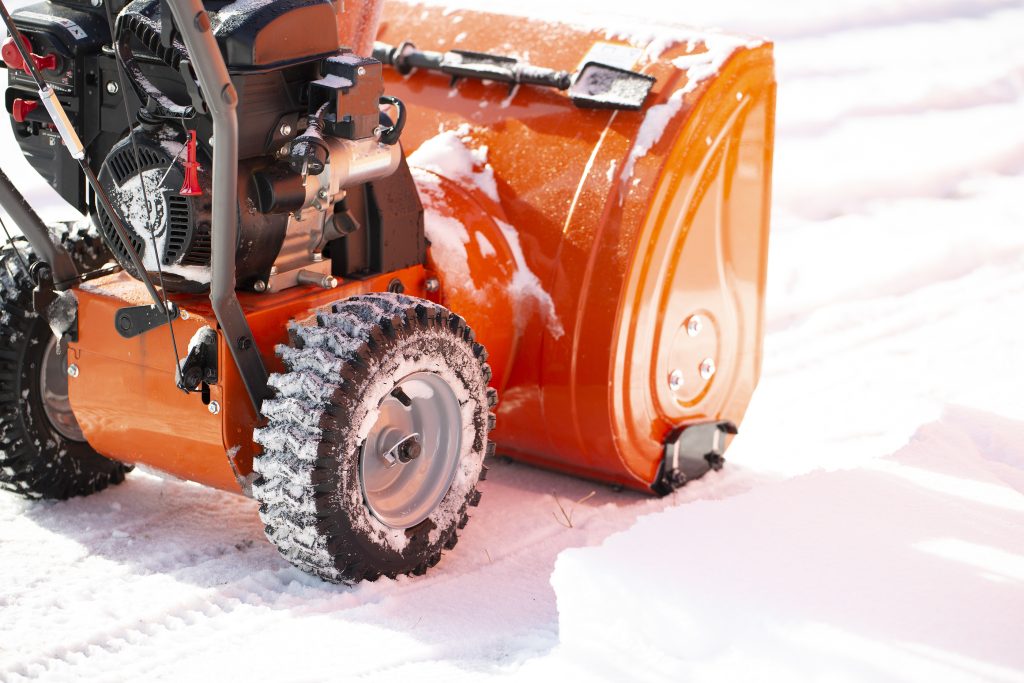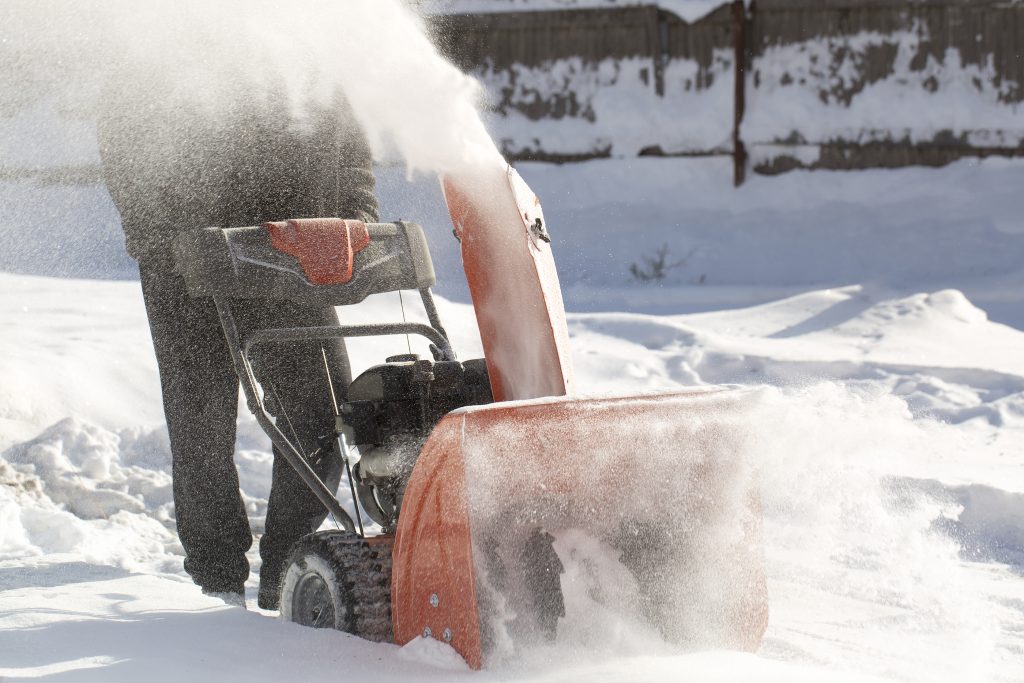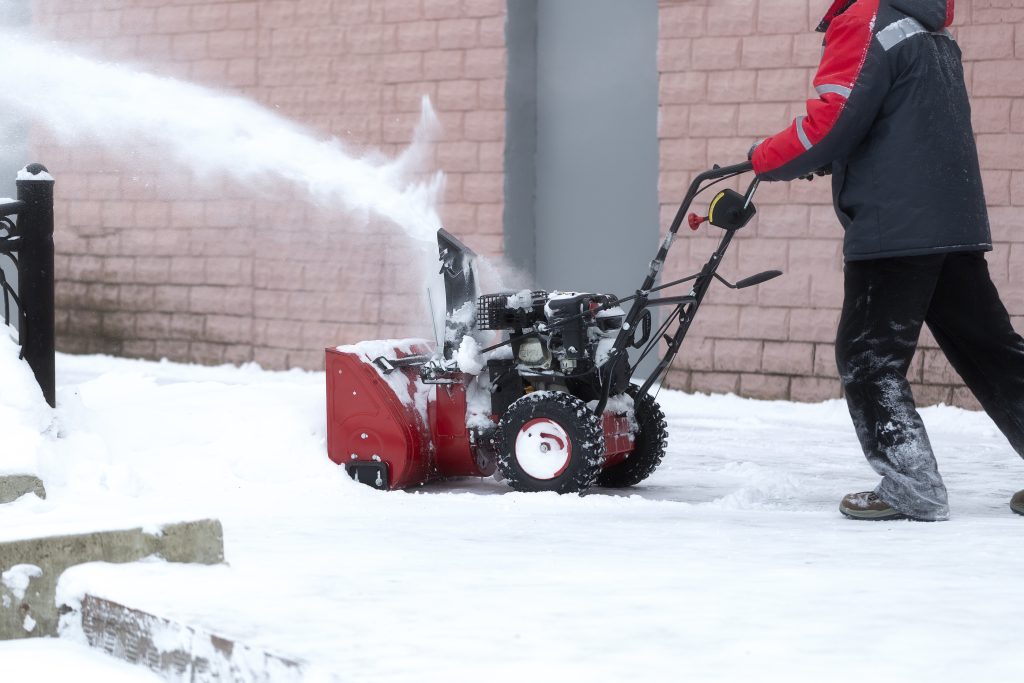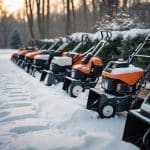A Complete Buyer’s Guide for Snow Blower: Essential Tips and Top Choices
A snow blower is an essential winter tool for regions with heavy snowfall. As a homeowner or property manager, investing in a reliable snow blower can save you valuable time and effort, allowing you to efficiently clear snow from driveways, sidewalks, and other areas. With a wide variety of snow blowers available in the market, it’s crucial to understand and consider the different types, features, and factors that will help you choose the best snow blower suited for your needs.
Factors such as the type of snow blower, power source, key features, and your budget play a significant role in determining the right snow blower for you. It’s also important to consider the performance and safety aspects, as well as the environmental impact of your choice. Additionally, understanding the necessary maintenance and care requirements will ensure the longevity and efficient functioning of your snow blower.
Key Takeaways
- Understand your snow-clearing needs and preferences to determine the suitable snow blower type and power source
- Consider key features, performance, safety, and environmental impact when choosing the right snowblower
- Keep in mind budget constraints, maintenance requirements, and expert tips for a well-informed purchase decision
Understanding Snow Blowers
Snow blowers, also known as snow throwers, are essential tools for efficient snow removal in many parts of the world. These machines provide a time- and labor-saving alternative to shoveling, allowing homeowners and businesses to clear their sidewalks and driveways with ease. In this section, we will discuss the main factors to consider when evaluating the design and usability of different snow blowers.
There are three primary types of snow blowers: single-stage, two-stage, and three-stage. Each type has unique features and is suited to different levels of snowfall and property sizes. Single-stage snow blowers are ideal for light snow and smaller areas. They use a single, high-speed auger to scoop up and throw the snow in a single motion. These machines are lightweight and easy to maneuver, making them a good choice for homeowners with limited storage space.
Two-stage snow blowers are more powerful and can handle heavier snowfalls and larger areas. In these machines, an auger collects the snow and transfers it to an impeller, throwing it out the chute with force. This two-step process allows for more effective snow removal. Two-stage snow blowers also typically have self-propelled transmissions with forward and reverse speeds, further assisting the user in clearing snow efficiently.
Three-stage snow blowers are the most powerful and best suited for heavy snowfall and extensive properties. These machines take the two-stage process further with an accelerator that rapidly chops and chews through the snow, allowing for even more efficient snow removal. These heavy-duty machines are often used by commercial property owners or residential users who experience heavy snowfall regularly.
In addition to the various stages of snow blowers, there are additional factors to consider when evaluating a snow blower’s design and usability. Some of these factors include the width of the clearing path, the type of propulsion, the power source (gas, electric, or battery-powered), and added features such as headlights, heated handles, or electric start. Each of these factors can impact the overall performance and ease of use of a snow blower, so it is important to weigh them against your specific needs and requirements.
In conclusion, understanding the different types of snow blowers and their features is crucial for making an informed decision when purchasing one. By taking the time to evaluate the design, functionality, and usability of snow blowers, you can choose the best machine for efficiently tackling the snowfall in your area.
Types of Snow Blowers
When it comes to snow blowers, there are three main types: single-stage, two-stage, and three-stage. Each type has advantages and is suitable for different snow conditions and areas.
Gas vs. Electric vs Battery-Powered
Gas-Powered Snow Blowers: These are the most powerful option and come in single-stage, two-stage, and three-stage models. Gas-powered snow blowers are suitable for areas with heavy snowfall, as they can handle large volumes of snow and clear it quickly. However, they produce more noise and emissions than electric and battery-powered models.
Electric Snow Blowers: Electric snow blowers, available in single-stage and two-stage models, are a more eco-friendly option as they do not emit harmful fumes. They require an electric outlet, so they are better suited for smaller areas close to your home. Electric snow blowers are generally lighter, quieter, and easier to maintain than gas-powered models. Corded electric snow blowers need a power source, limiting mobility, while cordless versions offer more freedom but may have limited battery life.
Battery-Powered Snow Blowers: These cordless snow blowers offer the convenience of no cords and no need for gas. They are typically available in single-stage models and are suitable for lighter snowfall or smaller areas. Battery-operated snow blowers provide the advantage of being quiet, easy to start, and low maintenance. However, battery life can be a concern, so it is important to consider the duration of use and have spare batteries if necessary.
Single-Stage Snow Blowers
Single-stage snow blowers are lightweight and designed for small to medium-sized areas with average snowfall. These machines use a single auger to scoop up the snow and throw it out of the chute. They are available in gas-powered, electric, and battery-powered models. Electric start single-stage snow blowers are convenient, allowing for easy startups during cold weather.
Two-Stage Snow Blowers
Two-stage snow blowers are more powerful than single-stage models ideal for larger areas and heavier snow. They feature a drill to collect the snow and an impeller to throw it out the chute, achieving greater clearing distances. Two-stage snow blowers are typically gas-powered, while
Selecting the Best Brand
When choosing a snow blower, selecting the right brand is crucial for ensuring product reliability and performance. Consumer Reports lists the following as the most reliable snow blower brands:
- Ariens
- Briggs & Stratton
- Craftsman
- Cub Cadet
- Honda
- Husqvarna
- PowerSmart
- Simplicity
Among these top brands, several factors come into play when selecting the best option for your needs. These factors include power source, design type, and additional features. For instance, some brands specialize in certain snow blower types, such as gas-powered, electric, or cordless models.
According to a 2023 guide by This Old House, the top 5 snow blowers include:
- Best Overall: EGO Power+ 56-Volt Cordless Snow Blower
- Best Corded Electric: Snow Joe 40-Volt Electric Snow Blower
- Best Gas-Powered: PowerSmart 2-Stage Gas-Powered Snow Blower
- Best Cordless: Snow Joe 48-Volt Cordless Snow Blower
- Best Compact Design: Earthwise 40-Volt Cordless Snow Shovel
Each of these top-rated snow blowers stands out in their respective categories. You may also consider factors like ease of use, maneuverability, and availability of replacement parts and accessories when deciding on the best brand for your snow blower.
Reviewing expert recommendations and customer reviews can help you make an informed decision. For a comprehensive analysis, visit websites like Consumer Reports and Pro Tool Reviews that provide detailed breakdowns and comparisons of various snow blower brands and models.
In summary, when selecting the best snow blower brand, it is important to consider factors like reliability, power source, design type, and additional features. Research, analyze, and compare different brands and models to choose the snow blower best suited to your needs and preferences.
Key Features to Consider
When purchasing a snow blower, it’s essential to consider several key features to ensure optimal performance and ease of use. One of the most important aspects to look for is the snow blower’s type, as these machines can be either single-stage, two-stage, or three-stage, each offering a different snow-clearing capability and suitability for various snowfall depths.
Another critical factor is the snow blower’s ability to control where the snow ends up. Modern snow blowers have implemented joystick chute controls or mounted cranks for easier adjustments of the vertical and horizontal direction of the discharged snow. This feature allows users to efficiently clear snow without manually repositioning the chute.
Ease of operation is another valuable feature of any snow blower. Consider models that offer single-handed operation, which enables users to engage the wheels and auger with just one hand. This functionality provides added convenience as it allows for simultaneous control of the machine’s movement and snow-clearing function.
For those in areas with heavy snowfall, investing in a three-stage snow blower can be a worthwhile decision. These machines are designed to remove heavy snow up to 18 inches deep and clear snow almost 50 percent faster than their two-stage counterparts. This enhanced efficiency is especially beneficial for larger driveways or areas that experience significant snow accumulation.
Lastly, remember to consider maintenance requirements for your snow blower. Some models come with features that help simplify upkeep, including fuel shut-off switches, easy-access drive belts, and settings for cold temperature operation. By choosing a snow blower with these maintenance-friendly features, users can ensure a longer machine lifespan and consistent performance even in harsh winter conditions.
Identifying Your Snow Blower Needs
Before purchasing a snow blower, it is important to consider the typical snowfall, the size of the area to be cleared, and the terrain on your property. This will help you decide the most suitable type of snow blower to handle your specific needs during winter weather.
When considering snowfall, be aware of the average amount that accumulates in your area. For light snowfall up to 6 inches, a single-stage snow blower is ideal, while two-stage models can efficiently clear up to 12 inches of snow. In areas with heavy snowfall, three-stage units can manage snow depths up to 18 inches. Knowing the snow clearing depth is essential, as it determines the size and power of the snow blower you require.
In addition to snowfall, the size of the area to be cleared must also be taken into account. Smaller driveways and sidewalks, especially paved ones, can often be tackled with a snow shovel or a compact, single-stage snow blower. For larger driveways, a two-stage snow blower may be more suitable, as they can cover more ground and clear a path more quickly than smaller models. Similarly, if you have a steep driveway, a single-stage model may be more powerful to handle snow removal on the incline, and a two- or three-stage model may be necessary.
The type of terrain and surface you have will also play a role in choosing the perfect snow blower. For example, paved areas, such as driveways and sidewalks, can be easily managed with single-stage snow blowers, while gravel or unpaved surfaces may require a two- or three-stage model to prevent damage to the auger or chute.
Lastly, consider the chute design and any additional features that come in handy, such as a clean-out tool for removing ice and snow from the snow blower’s chute or a snow blower cab to protect you from the elements while operating the machine.
By considering these factors, such as snowfall, size, clearing depth, and terrain, you can confidently choose the snow blower that will make snow removal efficient and effortless throughout the winter months.
Essential Features in a Snow Blower
When buying a snow blower, several essential features can make a significant difference in your snow removal experience. One important feature to consider is the snow blower’s speed control and reverse speeds. Adjusting the speed allows you to customize how you clear your driveway or walkway.
Auger and Impeller: A snow blower’s auger and impeller work together to collect and discharge snow. The auger breaks up the snow and feeds it into the impeller, throwing it out of the discharge chute. Look for a machine with a durable, efficient auger and impeller system, as these components will be doing most of the heavy lifting during snow removal.
Wheels and Traction: Most snow blowers come with either wheels or tracks, affecting their overall traction and maneuverability. Wheels are generally easier maneuvering, while tracks can provide better traction on slippery surfaces. Consider your specific needs and the type of snow you will encounter when choosing between wheels and tracks.
Headlights: Clearing snow in the early morning or late evening may require additional visibility. Headlights are a valuable feature that can help you see your path better in low-light conditions.
Chute Control: Efficiently directing the discharged snow is essential for effective snow removal. Modern snow blowers often have joystick chute controls or mounted cranks that allow you to adjust the direction and angle of the discharge chute while you work.
Price and Additional Features: The price of a snow blower can vary greatly, depending on its features and size. Be realistic about your budget and prioritize the features most important to you. For example, a single-handed operation feature allows you to engage the wheels and drill with one hand, freeing up the other for chute control or other tasks.
Keep these essential features in mind when shopping for a snow blower. Carefully considering your needs and the specific usage scenarios will help you find the right snow blower to make snow removal a breeze.
Battery and Power Considerations
When choosing a snow blower, it is essential to consider the battery and power options available. Battery-powered snow blowers have gained popularity in recent years, as they provide a more environmentally friendly and convenient alternative to gas-powered models. These machines utilize rechargeable batteries, often in the range of 40V to 60V, to provide ample power for clearing snow from driveways and walkways.
One of the main benefits of battery-powered snow blowers is the elimination of the need for extension cords, which can be cumbersome and time-consuming to manage. Furthermore, battery-operated models offer quieter operation and lower maintenance compared to their gas-powered counterparts. However, it is important to note that the runtime of a battery-powered snow blower may be limited, depending on the capacity of the battery. Many models come with 5.0Ah batteries, which can provide a decent runtime for small to medium-sized jobs.
The power and performance of a snow blower can be impacted by its accelerator, which is responsible for breaking up and propelling snow through the chute. A 2-stage snow blower, for example, typically has an accelerator that works in conjunction with an auger to clear snow more efficiently. This design allows the machine to throw snow up to 50 feet or more, depending on the model and settings.
To make the most of your battery-powered snow blower, consider investing in a dual-port charger, which can charge two batteries simultaneously, reducing downtime between charges. Additionally, look for models with a 180-degree rotating chute, which allows for precise control over the direction in which snow is thrown. This feature is particularly useful when clearing off walkways and driveways, as it helps to direct snow away from sensitive areas, such as vehicles and landscaping.
In conclusion, when selecting a snow blower, carefully consider the battery type and power capabilities of the machine. Choosing a model with features such as a 2-stage accelerator, 180-degree rotating chute, and dual-port charger will ensure that you have the most efficient and user-friendly experience while clearing snow from your property.
Safety Precautions
Operating a snowblower can be dangerous if proper safety precautions are not taken. Before using your snowblower, it is important to familiarize yourself with the manufacturer’s instructions and follow them closely. Keep your machine in good working order by reviewing the maintenance and service instructions and having replacement parts on hand.
Eye protection is crucial while snow is blowing. Wear goggles or glasses to shield your eyes from flying debris, particularly when unclogging the machine. In addition, protecting your hearing is essential as snow blowers can be extremely loud, especially gasoline-powered ones. Prolonged exposure to loud noise may lead to hearing damage or hearing loss. It is recommended to wear earplugs or other hearing protection while operating your snowblower.
Another important safety measure is to clear pathways before it snows. This will help prevent hidden objects from clogging the snowblower’s chute, causing damage to the machine, or injuring people. You can find more information on clearing pathways in Consumer Reports.
When using your snowblower, wear boots with proper traction to avoid slipping. Staying focused and avoiding distractions is crucial for operating the machine safely. It is also important not to consume alcohol or narcotics before using your snowblower, as this may impair your ability to operate the machine safely.
In summary, taking the appropriate safety precautions when using a snowblower can help prevent accidents and injuries. Always read and follow the manufacturer’s instructions, wear appropriate protective gear, and clear pathways before snow blowing. Stay focused, avoid slipping, and refrain from using substances that may impair your ability to operate the machine safely.
Performance and Safety
When looking for the best snow blower, it’s essential to consider performance and safety factors. The performance of a snow blower is often evaluated based on factors like its ability to handle heavy snow and maneuverability. Heavy snow can be challenging to manage, so choosing a snow blower capable of handling such conditions is vital for its efficiency. A self-propelled snow blower is an excellent choice for this, as it has the power to move through the snow and clear pathways more easily.
Safety is another crucial aspect to keep in mind, as a snow blower needs to be secure and reliable. Certain features, such as LED headlights, provide better visibility during nighttime, ensuring a safer snow removal process. Comparing different snow blowers’ safety ratings will also help you find the best option.
Maneuverability is another essential factor to consider when choosing a snow blower. A machine that is easy to handle and navigate will make snow removal more efficient and less strenuous. It is advisable to compare various options and go for the one that is easy to control and offers maximum stability on uneven surfaces.
One of the trusted sources to find reliable snow blower ratings is Consumer Reports. This platform provides unbiased assessments of various snow blower brands and models, enabling you to make informed decisions based on performance and safety features.
In conclusion, focusing on performance, maneuverability, and safety features, such as LED headlights and ratings, will allow you to find the best snow blower for your needs. By making a well-informed decision, you can ensure a safer and more efficient snow removal process.
Budget Considerations
When purchasing a snow blower, it’s essential to consider your budget. Snow blowers range in price from around $180 to over $3,000, with features and size dictating the cost source. It’s crucial to balance affordability and performance, as cheaper models may not be suitable for heavy snowfall or larger areas.
One option for budget-conscious buyers is to look for the best cheap snow blowers of 2023. Some affordable models worth considering include the Greenworks 13-Amp 20-inch Corded Snow Blower and the Snow Joe 48V IONMAX 18-inch Cordless Snow Blower. Both options can be found at Amazon, Lowe’s, or Walmart.
It’s also a good idea to research the best budget snow blowers, according to Consumer Reports. While top-rated snow blowers can be expensive, reliable models are available that won’t break the bank.
Remember that maintenance and the cost of replacement parts should also be included in your budget considerations. Gas-powered snow blowers require regular maintenance, such as oil changes and spark plug replacements. Electric and battery-powered models, on the other hand, tend to have lower maintenance costs but may need replacement batteries over time.
Finally, consider the cost of additional accessories when planning your purchase. Some snow blowers may require additional items, such as snow blower cabs or clean-out tools to remove ice and snow from the discharge chute. Including these costs in your budget will help ensure you have the necessary equipment to keep your snow blower functioning properly.
Buying Tips from Experts
When looking for a snow blower, it is essential to find one that suits your needs and environment. Experts have shared valuable insights and tips to help you make an informed decision. Keep factors like the size of the driveway, the frequency of snowfalls, and the surface material in mind.
Firstly, consider the type of snow blower you need, as there are three main categories: single-stage, two-stage, and three-stage snow blowers. Single-stage snow blowers are suitable for lighter snowfalls and smaller areas, while two-stage and three-stage snow blowers can handle heavier snowfalls and larger areas. A three-stage snow blower can remove heavy snow almost 50 percent faster than the same size two-stage machine, making them ideal for areas with regular heavier snowfalls.
Next, take note of your driveway’s material. For gravel driveways, you’ll need a two-stage or three-stage snow blower that can adjust the height of the intake, preventing it from picking up gravel. Single-stage snow blowers are unsuitable for gravel surfaces, as they may damage the machine and scatter rocks.
Price is also an important factor to consider when searching for the best-value snow blower. Prices vary depending on the size and features of the machine. Create a budget according to your requirements and try not to compromise on essential features like reliability and power.
Another factor to consider is the best time to buy a snow blower. Generally, December may be the most advantageous time to purchase, as retailers often offer discounts and sales during the holiday season. By buying during this period, you may find a snow blower with more features at a lower price.
Lastly, pay attention to the reliability and longevity of the snow blower. Research the brand’s reputation and read customer reviews to ensure you invest in a dependable machine. Choosing a snow blower from a well-known manufacturer with positive customer feedback may save you money on repairs and maintenance in the long run.
By following these expert tips, you will be well-equipped to make a confident decision in purchasing the right snow blower for your needs and environment.
Choosing The Right Snow Blower
When looking for the perfect snow blower, it’s essential to consider various factors to ensure it meets your specific needs. One critical aspect to consider is the snow blower’s design. A compact design enables easy maneuverability and storage, especially for those with limited space. It’s crucial to choose a model that’s both efficient and easy to handle.
Another important factor is the snow blower’s clearing width. The width determines how much snow can be removed in a single pass, affecting the time it takes to clear your driveway or sidewalk. To handle snowfalls up to 8-12 inches, a single-stage snow blower with an 18-22 inches wide clearing path is recommended. However, for deeper snow drifts, a two or 3-stage model with a larger clearing width would be more effective.
Self-propelled wheels are a feature that can make a significant difference in performance, particularly for heavy, wet snow. A two-stage snow blower is equipped with self-propelled wheels, which makes it easier on your back and prevents the machine from bogging down in deep snow. This feature allows for faster and more efficient snow removal, reducing the strain on the user.
In summary, when choosing the right snow blower, it’s essential to consider factors such as compact design, clearing width, and self-propelled wheels. By doing so, you’ll be able to find a model that efficiently clears the snow, making winter maintenance tasks more manageable.
Pros and Cons of Snow Blower
A snow blower can be a great addition to your winter toolkit, but it is important to weigh the pros and cons before purchasing. In this section, we will discuss the advantages and disadvantages of owning a snow blower.
One of the main advantages of a snow blower is convenience. Clearing snow with a blower is much faster and easier than shoveling, particularly with multi-stage machines for heavy snow. This can be a lifesaver for those with large driveways or walkways, as well as anyone with mobility issues or health concerns.
Additionally, snow blowers can be more effective at removing snow than shovels, particularly in regions with deep or heavy snowfall. Multi-stage blowers can clear wider paths and throw snow further away, making snow removal more efficient. Features like power steering and electric start also enhance the user experience, making it easier to control and maneuver the machine.
One downside of snow blowers is the initial cost. Newer models can range from several hundred dollars to over $1,000. For those who live in areas with infrequent or light snowfall, this investment may require more than justifying. However, purchasing a used snow blower could be a more cost-effective option for such individuals.
Maintenance is another consideration when owning a snow blower. Gas-powered models require regular upkeep, including oil changes and tune-ups. While electric models often require less maintenance, they may have a shorter lifespan compared to their gas counterparts.
Snow blowers also take up a significant amount of storage space, which may be a drawback for those with limited garage or shed capacity. Additionally, transporting a snow blower can be difficult due to its size and weight, making it less portable than a traditional shovel.
In conclusion, a snow blower can be a valuable tool for effectively managing snow removal. Weighing the pros and cons of owning one can help you decide if a snow blower is a worthwhile investment for your needs.
Maintenance and Care
-
Regular maintenance and care are crucial to keep your snow blower running efficiently and prolong its lifespan. One of the key steps in maintaining your snow blower is to check the oil level before each use and add as needed. It is essential to change the oil and spark plug at least once a season or every 100 hours of use to ensure optimal performance 1.
After each use, take the time to sweep off the machine and dry it with a cloth. This step will help prevent snow and ice from causing corrosion or rust on your snow blower’s components. Additionally, it’s important to protect your snow blower’s fuel tank from corrosion by storing it filled with treated fuel, as untreated gas can degrade in as little as 30 days 2.
When it comes to the auger and chute, applying a non-stick spray can help prevent clogs and reduce the need for frequent cleaning 3. Inspecting the scraper blade and skid shoes regularly will ensure they function correctly and prevent potential damage.
Lubricating bearings and checking tire pressure are additional essential steps to maintain the usability and efficiency of your snow blower. Be sure to wipe off any salt or other materials from the machine using a warm, wet cloth after each use, as these substances can lead to corrosion or other issues over time.
Overall, taking the proper care and following a regular maintenance schedule will help to keep your snow blower running smoothly during the winter season.
Footnotes
Environmental Impact
The usage of snow blowers has implications for the environment. One of the primary concerns is fuel consumption and emissions. Traditional gas-powered models release harmful pollutants, such as carbon monoxide, nitrogen oxide, and hydrocarbons. To reduce emissions, consider a more eco-friendly option, like battery-powered snow blowers. They operate quietly, generate zero emissions, and are easier to maintain.
Fuel spillage may also contribute to environmental concerns. It’s essential to be cautious while refueling to prevent accidental spills that result in nitrogen oxide emissions. Additionally, at the end of the season, owners should drain excess fuel from their snow blower rather than letting the engine run until dry.
However, electric snow blowers have their limitations due to battery life and power. As battery performance varies with load, use, and environmental conditions, you should consider your specific snow-clearing needs when purchasing. For those living in regions with heavier snowfall, a gas-powered snow blower with lower emissions may be a better option.
In conclusion, considering the environmental impact is an important aspect when choosing a snow blower. By being mindful of the machine’s fuel consumption, emissions, and individual requirements, you can make an informed decision that benefits the environment and fulfills your snow-clearing needs.
Frequently Asked Questions
What features should I consider when buying a snow blower?
When purchasing a snow blower, consider factors such as clearing width, throwing distance, and maneuverability. Look for features like electric start, power steering, and heated handles for convenience and comfort. Remember to consider the type of terrain and snow accumulation in your area. The Family Handyman’s buying guide provides helpful information on the features to consider.
What is the difference between single-stage, two-stage, and three-stage snow blowers?
Single-stage snow blowers use a drill to break up the snow and throw it out of the chute. They are ideal for light snow accumulation and flat surfaces. Two-stage models use a drill to break up the snow and an impeller to throw it out of the chute, making them more effective for moderately heavy snowfall and uneven terrain. Three-stage snow blowers are the most powerful, featuring an auger, impeller, and accelerator for efficient snow removal in heavy snowfall conditions. Lowe’s snow blower buying guide can help you understand these differences better.
Which snow blower brands are the most reliable?
There are numerous reliable snow blower brands on the market. Some popular and well-regarded brands include Toro, Husqvarna, Ariens, and Honda. This Old House’s list of the best snow blowers features some of the top models from these manufacturers.
How do I determine the right size snow blower for my needs?
To choose the right size snow blower, take into consideration the size of the area you need to clear and the typical snow accumulation in your region. For smaller areas and light snowfall, a single-stage model with a narrower clearing width might suffice. For larger areas and heavier snowfall, consider a two-stage or three-stage model with a wider clearing path. Storage space and ease of use can also impact your decision. The Consumer Reports snow blower buying guide can help you select the appropriate size.
What are the advantages of electric snow blowers compared to gas-powered ones?
Electric snow blowers are generally lighter, quieter, and require less maintenance than gas-powered models. They are especially suitable for small to medium-sized areas with light to moderate snowfall. Eco-friendly, electric models produce no emissions and start easily with the push of a button. However, they may not be as powerful as gas-powered models and have limitations in terms of range and runtime. For further insights, refer to the SnowBlowers.net buyer’s guide.
Where can I find the best deal on a snow blower?
To find the best deal on a snow blower:
- Compare prices across retailers like Lowe’s Home Depot and online platforms like Amazon.
- Keep an eye out for seasonal sales, promotions, and clearance events to score the best price.
- Remember to read reviews and research before purchasing to get the best value for your money.
Conclusion
Purchasing the right snow blower for your needs can greatly ease the burden of dealing with snowfall during the winter months. By considering factors like power source, stage type, and size, you can make a well-informed decision that will save you time and effort in the long run.
When comparing snow blowers, it’s crucial to evaluate their features and intended usage. For example, a single-stage snow blower may be suitable for areas with lighter snowfalls, while a two or 3-stage model is necessary for handling heavier snowfall and larger drifts.
Additionally, consider the benefits and limitations of different power sources like electric, gas-powered, and cordless models. The best snow blowers have a balance of power, runtime, and ease of use that will suit your needs.
Once you’ve chosen your ideal snow blower, take the time to familiarize yourself with its operation, maintenance, and safety features. A snow blower cab or a clean-out tool can enhance your experience and make snow removal more seamless. Combining this research with the guidance provided in this buyer’s guide, you can feel confident that you’re making a smart and informed decision for your winter snow removal needs.

